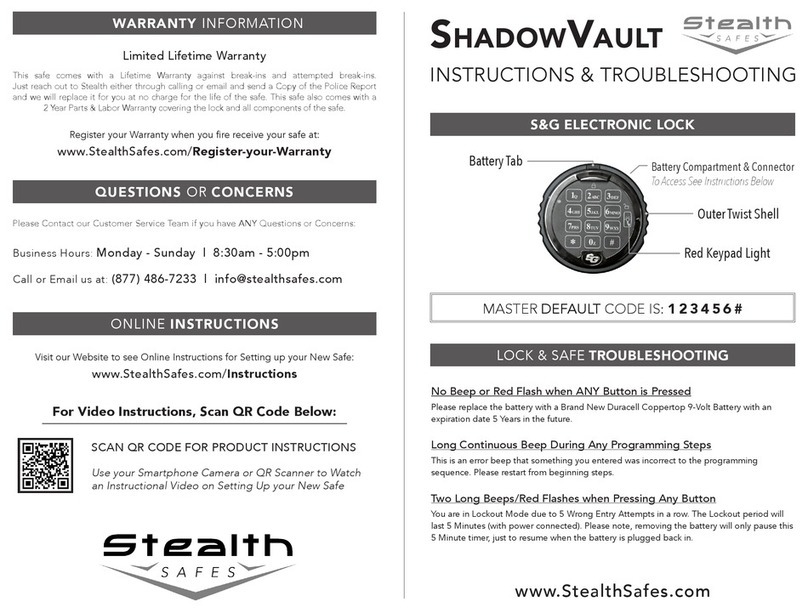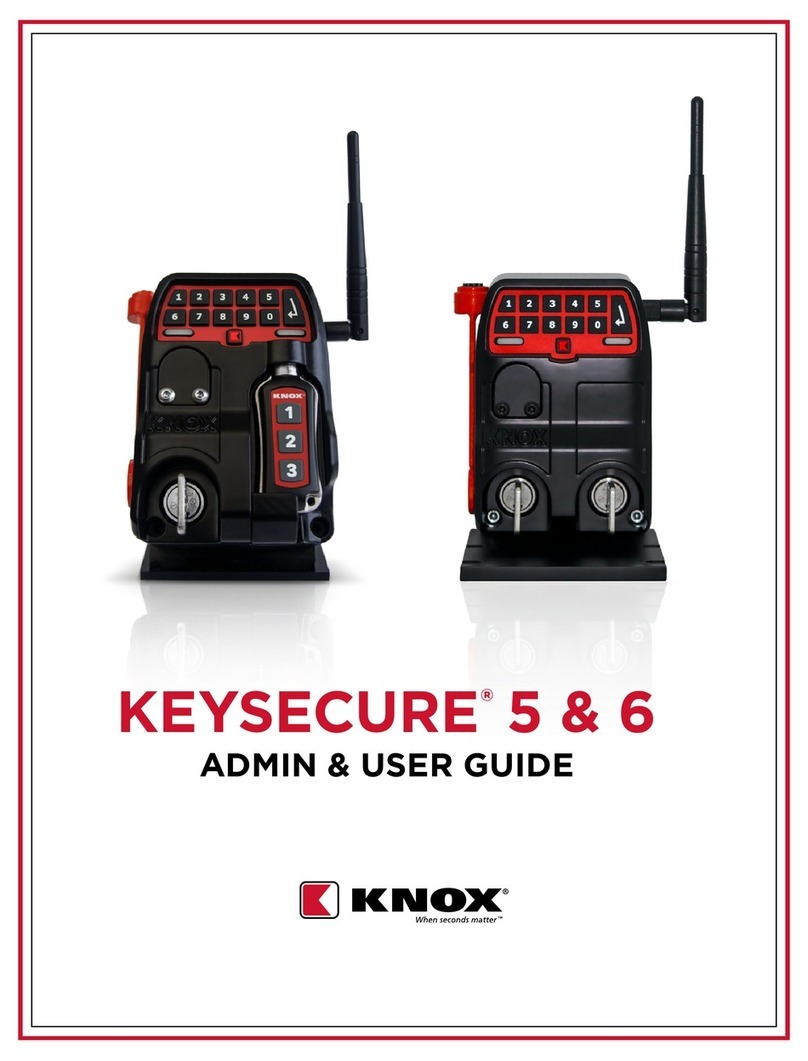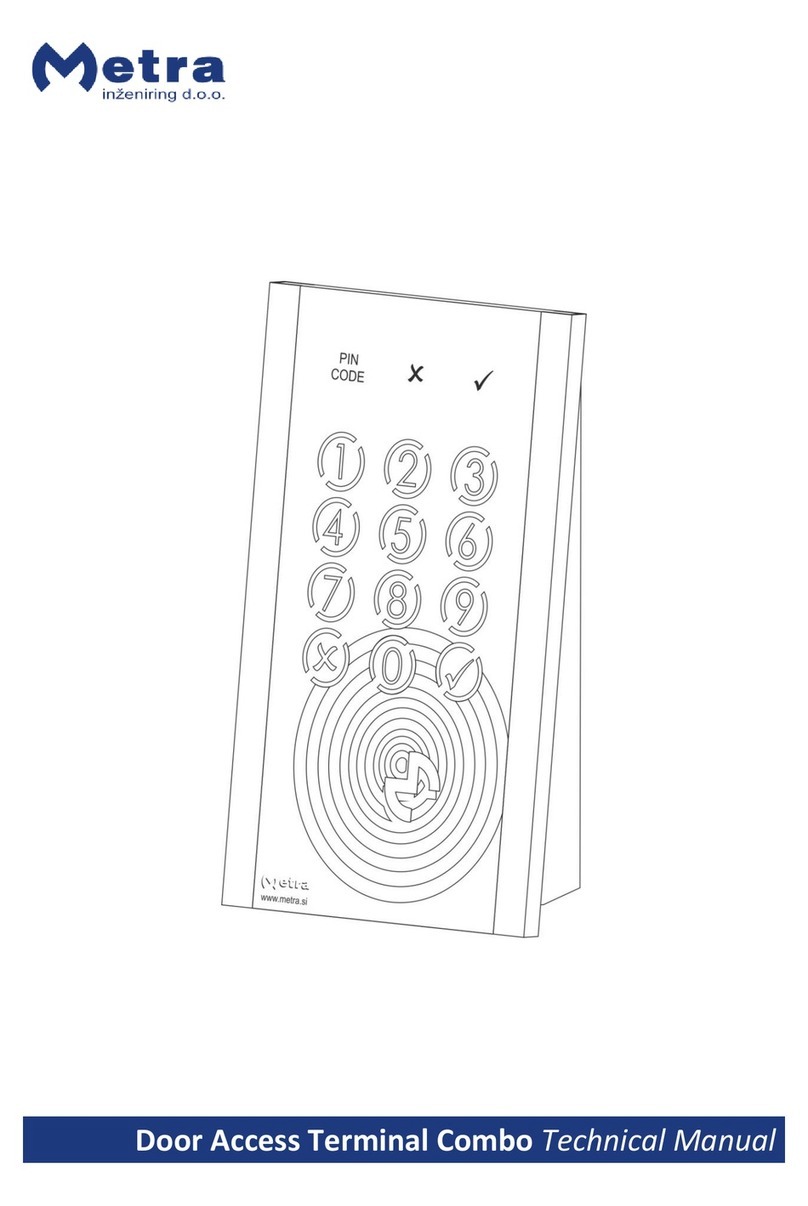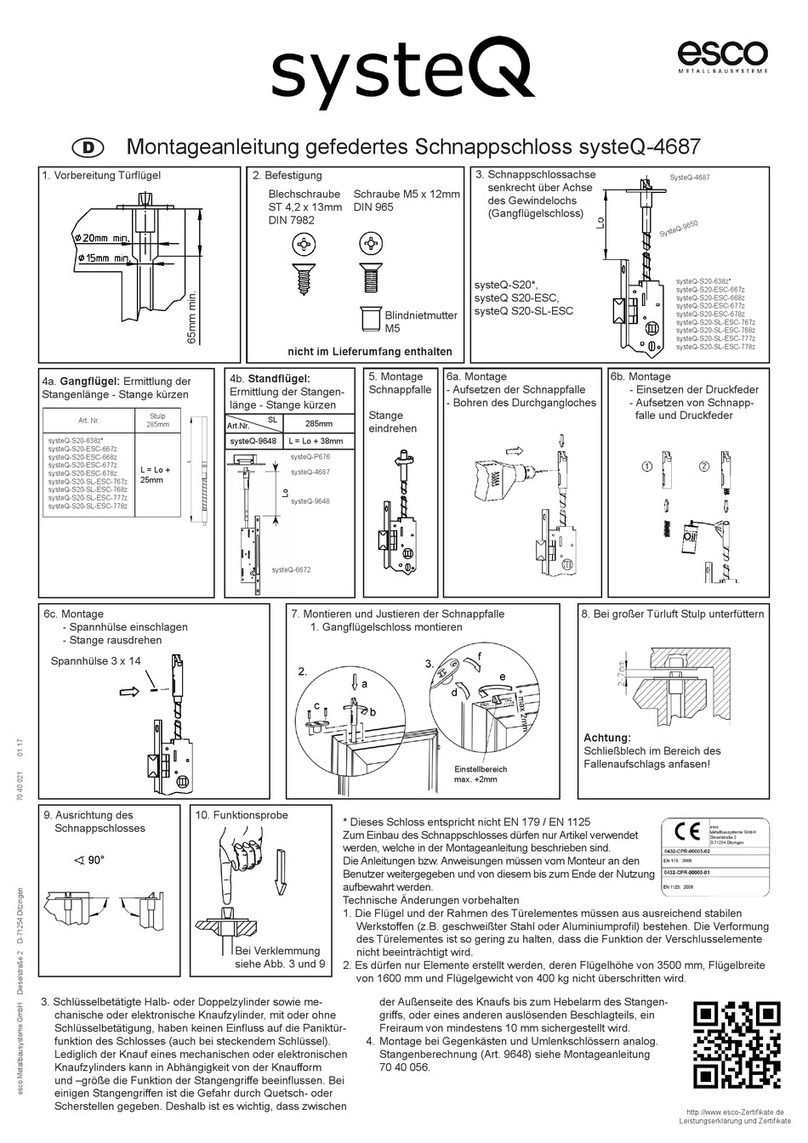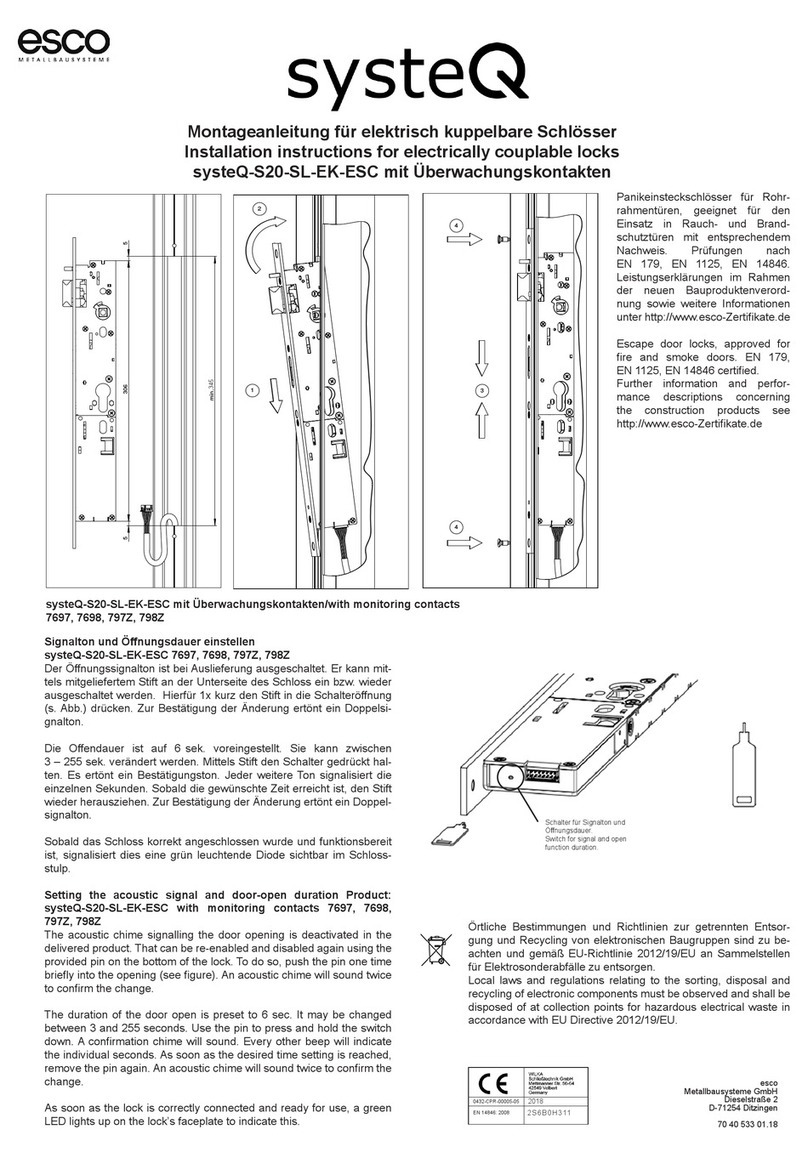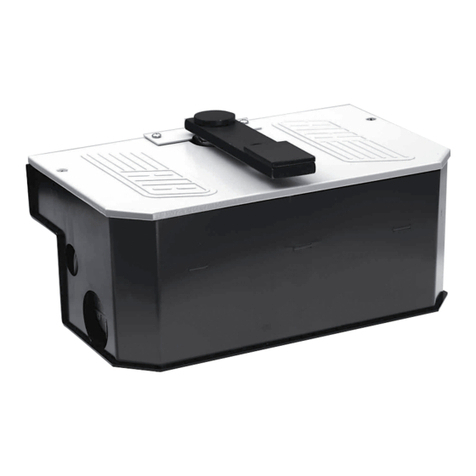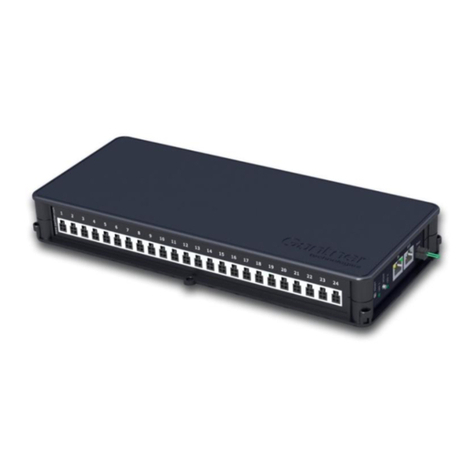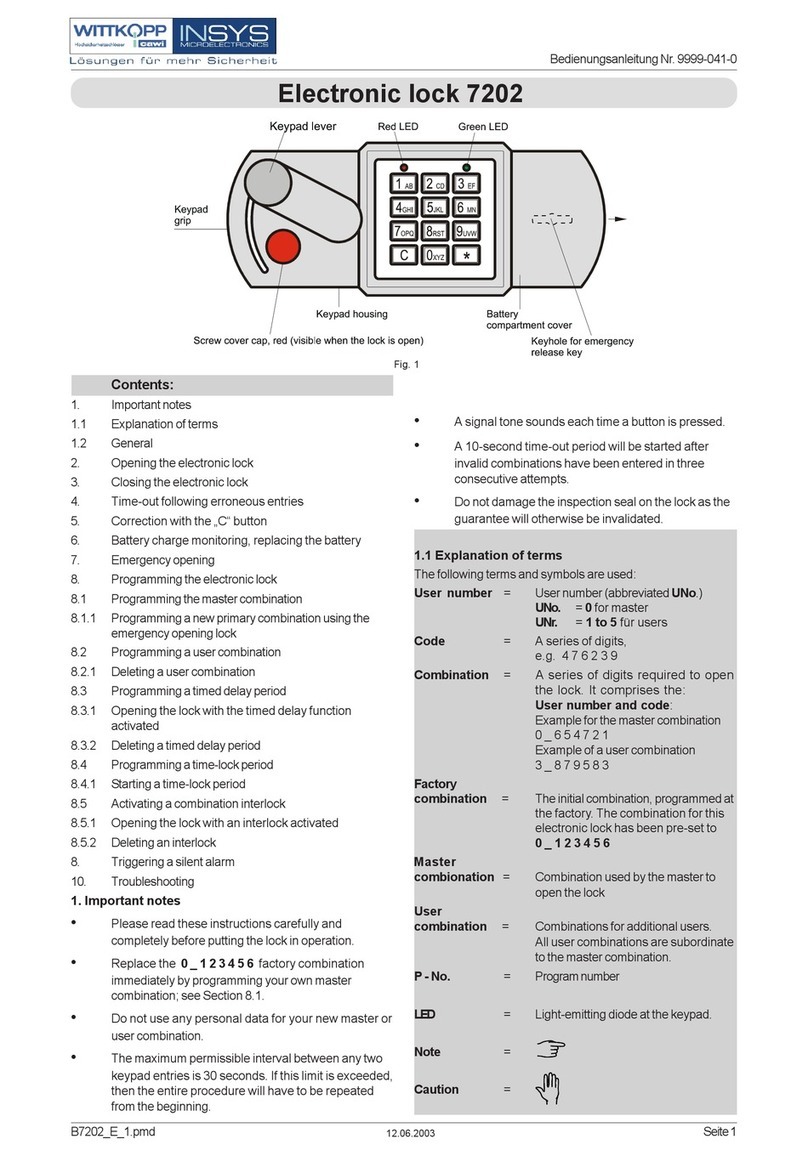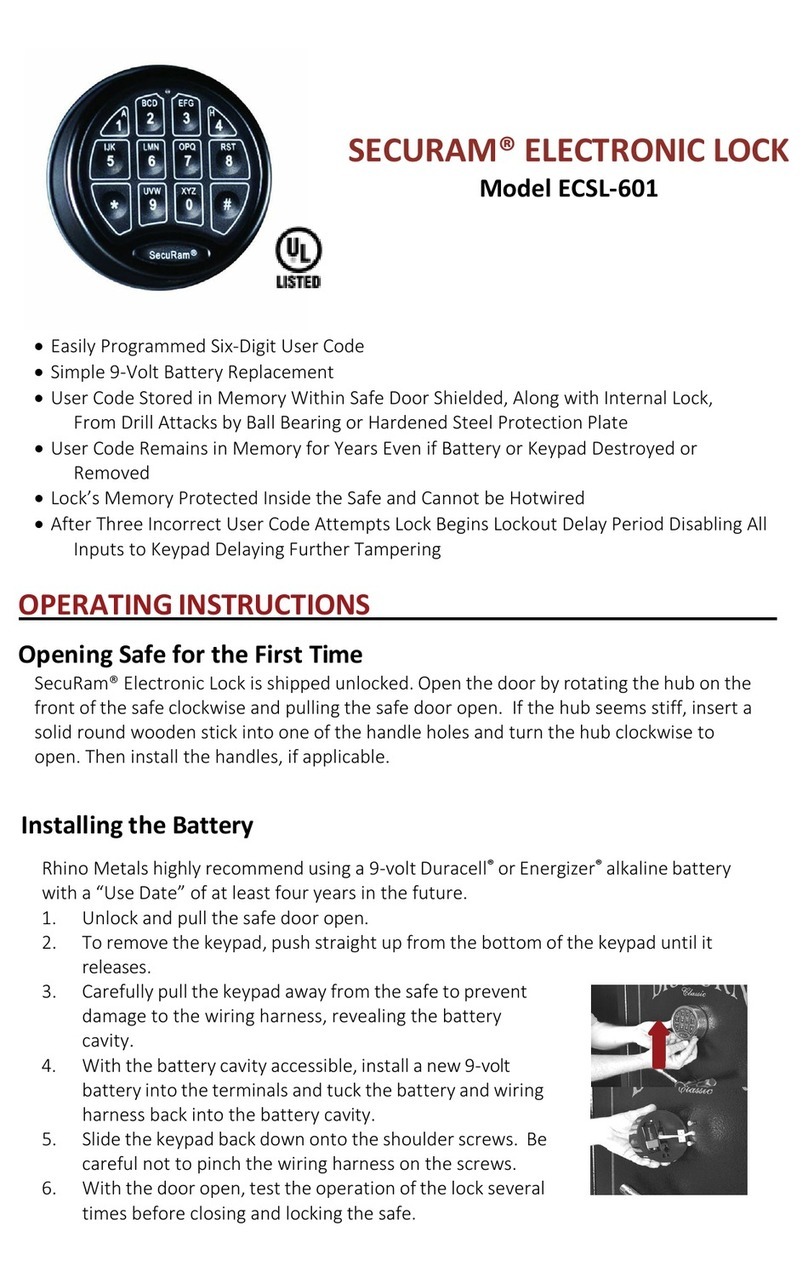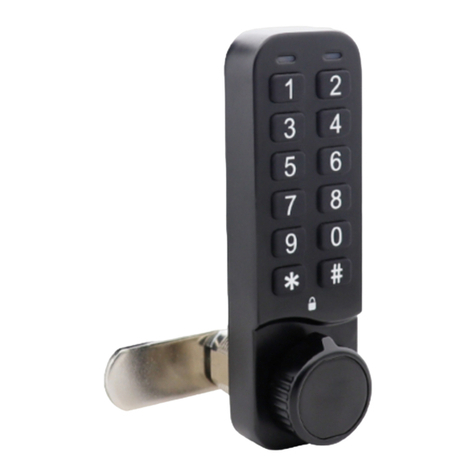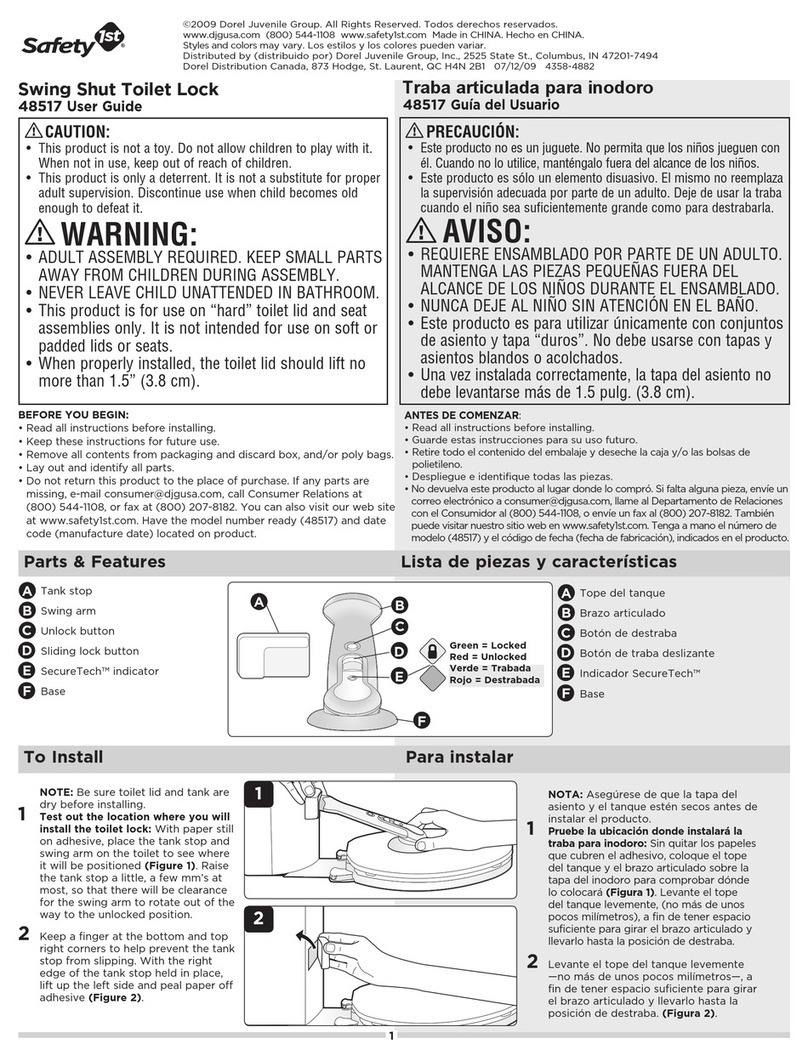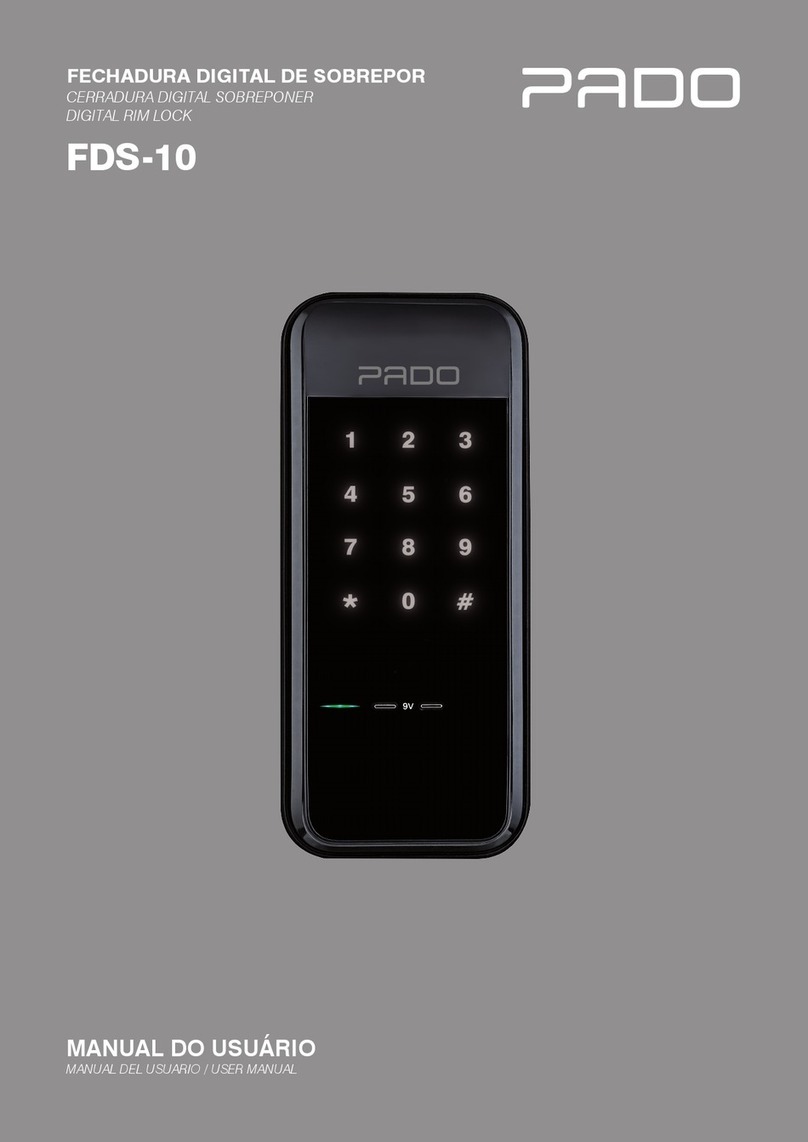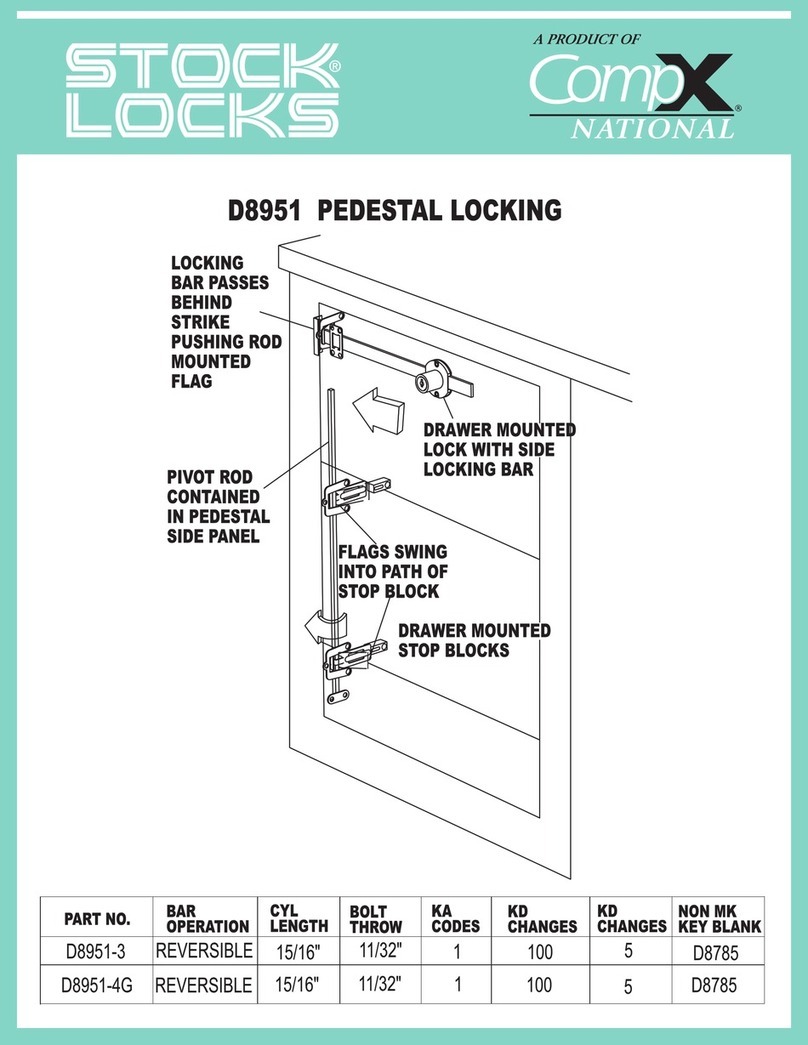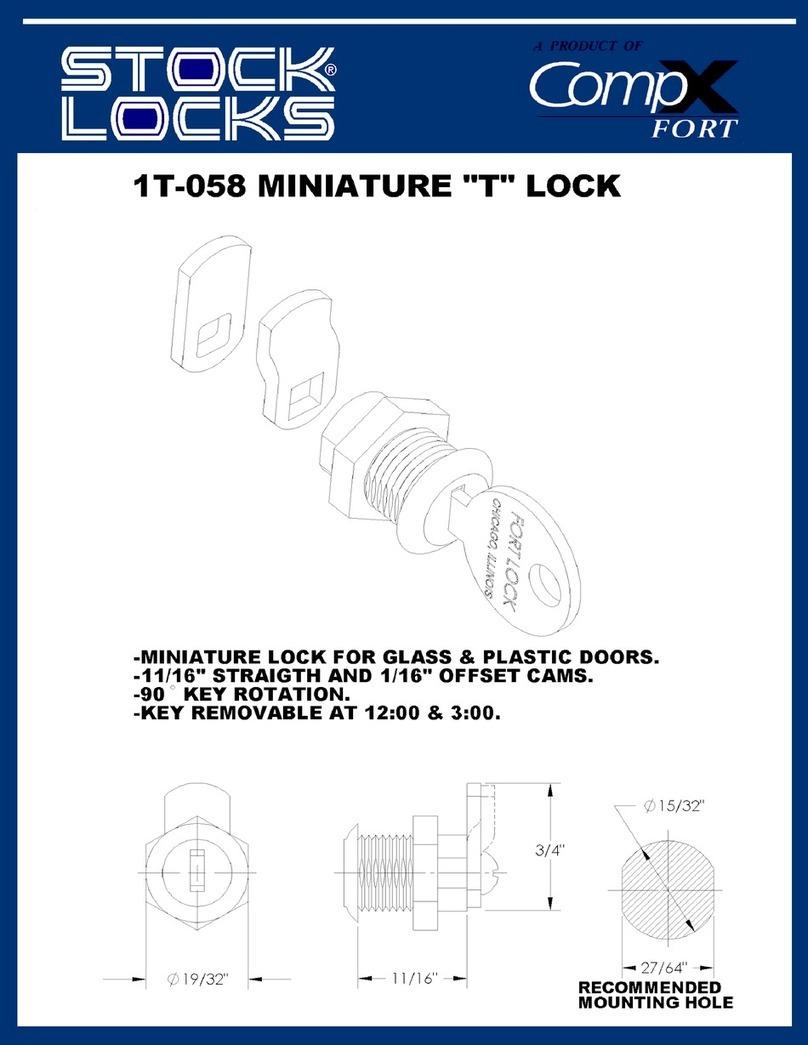
89
3. Einstellmöglichkeiten
Signaltoneinstellung:
- Die Signaltoneinstellung erfolgt über den Taster hinter der Stulp. Der Signalton kann ein- und ausgestellt
werden. Voreingestellt ist „aus“. Zur Zustandsänderung 1x kurz den Taster betätigen. Die Bestätigung
der Änderung erfolgt durch einen Doppelsignalton.
Dauerentriegeltfunktion:
- Die Dauerentriegeltfunktion kann ein- und ausgestellt werden. Voreingestellt ist „aus“. Nur in diesem
Auslieferungszustand ist der motorische Gegenkasten zugelassen für Brand- und Rauchschutztüren.
Zur Zustandsänderung 1x länger, bis zum zweiten Signalton den Taster betätigen. Die Bestätigung der
Änderung erfolgt durch einen Doppelsignalton. Der neu eingestellte Zustand ist im Nachgang zu über-
prüfen. Hierzu muss der jeweilige Eingang dauerbestromt werden. Siehe auch Warnhinweis unten.
Einstellung der Entriegelungszeit:
- Die Entriegelungszeit kann eingestellt werden. Voreingestellt sind 4 Sekunden Nach dieser Zeit werden
die Fallen- und Riegelauswerfer sowie die Verriegelungsstangen (bei zweiügeliger Entriegelung) wieder
freigegeben (Die Verriegelungsstangen werden jetzt durch das Schaltschloss gehalten). Um die
Entriegelungszeit einzustellen, ist der Taster für die gewünschte Zeit (mindestens 3 Sekunden) gedrückt
zu halten. Jede gehaltene Sekunde ertönt ein Signalton. Die Bestätigung der Änderung erfolgt durch ein
Doppelsignalton. Es besteht die Möglichkeit, die Zeit zwischen 3 und 255 Sekunden einzustellen.
Entsorgung
Da das Motormodul systeQ 765M elekt-
ronische Komponenten enthält, muss sie
gesondert entsorgt werden.
Warnhinweise:
Die Motoreinheit wird mit ausgeschalteter Dauerentrie-
geltfunktion ausgeliefert. Nur in diesem Zustand ist das
Produkt zugelassen für den Brand- und Rauchschutz.
Mit eingeschalteter Dauerentriegeltfunktion darf der
motorische Gegenkasten nicht in Brandschutz- oder
Rauchschutztüren verbaut werden. Brand- oder Rauch-
schutztüren müssen selbstschließend sein. Dies ist bei
eingeschalteter Dauerentriegeltfunktion nicht gegeben.
In Brand- oder Rauchschutztüren ist die Funktion
Dauerentriegelt zwingend auszuschalten.
Sobald das Schloss korrekt angeschlossen wurde und
funktionsbereit ist, signalisiert dies eine grün leuchtende
Diode sichtbar im Schlossstulp.
Einstellmöglichkeiten über den
Taster. Hierzu ist der mittlere
Blindstulp zu entfernen, der die
Einstellönung verdeckt.


